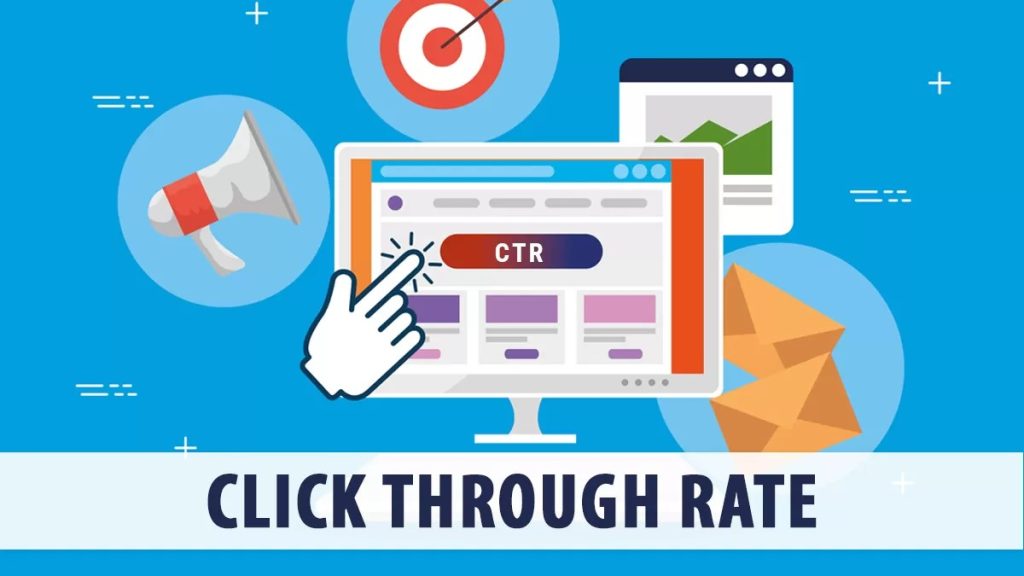
CTR is often used to evaluate the performance of various digital marketing campaigns. This includes paid ads, social media, and email marketing. A higher click-through rate typically indicates that an audience finds the content relevant, engaging, and compelling enough to take action. However, CTR should not be viewed in isolation, as it is just one component of a successful campaign.
The Formula for Calculating Click-Through Rate
The formula for calculating CTR is straightforward. Divide the number of clicks a link receives by the total number of impressions (times the link was viewed), and multiply the result by 100 to get a percentage. For example, if a digital ad receives 500 clicks from 10,000 views, the CTR would be:
CTR = (500 clicks / 10,000 impressions) x 100 = 5%
A 5% click-through rate means that 5% of people who saw the ad clicked on it, which would be considered relatively high depending on the industry and platform.
Why is Click-Through Rate Important?
Click-through rate is one of the most important metrics in digital marketing. This is because it offers direct insights into how well your content resonates with your target audience. If a campaign has a low CTR, it may suggest that the ad copy, creative elements, or audience targeting need adjustments. For example, poorly written headlines or irrelevant offers can significantly reduce the likelihood of a click.
Furthermore, CTR has financial implications for paid advertising campaigns, such as pay-per-click (PPC) ads. In platforms like Google Ads, a high CTR can improve the ad’s quality score, which in turn can lower the cost-per-click (CPC). As a result, businesses get more value for their advertising dollars by improving their click-through rate.
What is a Good CTR?
The definition of a “good” click-through rate varies significantly depending on the industry, platform, and campaign type. In general, search ads tend to have higher CTRs than display ads. For example, the average CTR for Google Ads on the search network is around 3.17%, while on the display network, it drops to 0.46%. Each business should tailor these benchmarks to its specific goals and context.
Industries also play a major role in determining what constitutes a good CTR. In sectors like retail and ecommerce, businesses typically expect a CTR of 2-3%, while in more niche industries such as legal services or B2B, a CTR closer to 1% can still indicate success. Email marketing campaigns also exhibit variable CTRs, with an average of around 2.6% across all industries, although this figure can differ based on the quality of the email list and campaign targeting.
Improving Your CTR
Improving CTR requires a combination of optimizing ad copy, targeting the right audience, and testing different creative elements. Here are a few strategies that can help increase your click-through rate:
Compelling Headlines and Copy: The first thing users see is the headline. Crafting headlines that are attention-grabbing and relevant to the target audience is crucial for improving CTR. Copy that clearly communicates value and addresses the audience’s needs will further encourage clicks.
Strong Call-to-Actions (CTAs): A well-placed and clear CTA is vital for driving user engagement. Phrases like “Buy Now,” “Learn More,” or “Get Started” encourage users to take immediate action. Ensure that the CTA aligns with what the user expects based on the ad or content.
A/B Testing: Experiment with different headlines, CTAs, images, and targeting strategies to see what works best. Small tweaks in ad content or email designs can lead to significant improvements in CTR.
Mobile Optimization: Since a growing number of users access content through mobile devices, ensuring that ads, emails, and landing pages are mobile-friendly can have a direct impact on CTR. Poorly optimized mobile experiences, such as slow-loading pages or difficult-to-read content, can drive users away.
Targeting the Right Audience: Reaching the right people is essential for a high CTR. Paid ads offer detailed targeting options based on location, demographics, and interests, allowing marketers to narrow their audience to those most likely to engage.
CTR and Conversion Rates
While click-through rate is an important indicator of campaign success, it does not necessarily correlate with conversions. A high CTR may not always lead to a high conversion rate, especially if the traffic generated is not qualified or if the landing page fails to meet user expectations. This is why businesses should focus on both CTR and conversion rates to fully assess the effectiveness of their campaigns.
For instance, an ad might generate a 5% CTR, but if only 1% of those clicks result in a purchase, the overall return on investment may be lower than expected. This discrepancy could be due to factors such as mismatched user intent, misleading ad copy, or poorly designed landing pages.
Click-through rate is a critical metric for measuring the effectiveness of digital marketing efforts. A higher CTR generally indicates that your audience finds your content relevant and compelling, which can lead to increased traffic and lower advertising costs. However, improving CTR requires a comprehensive approach, including refining ad copy, enhancing targeting, and optimizing the user experience.
By focusing on increasing click-through rate while also monitoring conversion rates, businesses can improve their overall marketing performance and maximize the impact of their campaigns.

